Anatomy of the shoulder
Right shoulder structure
About the bones of the shoulder:

Shoulder joint consists of clavicle, humerus, and scapula.
The clavicle lifts the scapula that helps smooth its motion.
The scapula works as a basement of the humerus.
The head of the humerus is covered with the hyaline cartilage, and it contacts the scapula.
Scapula:
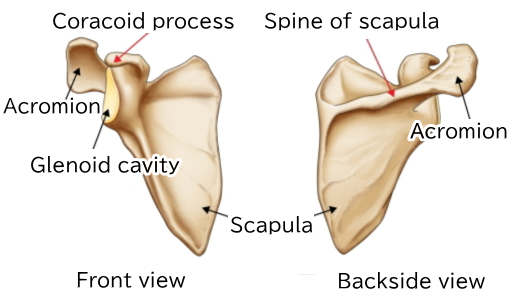
Glenohumeral joint is where the head of the humerus fits into the glenoid cavity of the scapula. The surface of the joint is covered with cartilage which makes the joint move smoothly.
When the cartilage starts wearing down on the ball and/or socket sides of the shoulder joint, the shoulder may lose certain range of motion, and feel stiff and pain. This is called osteoarthritis of the shoulder.
Acromion:It is the top of outer edge of the scapula, forming a roof shape to catch the humerus. There is the deltoid, a thick, triangular shoulder muscle, attached to it.
Coracoid process:It is a hook-shaped bone structure serving as a critical anchor for several muscles and ligaments such as short head of the biceps tendon/the biceps brachii muscles, brachial muscle, and minor pectoral muscle/pectoralis minor. You may feel off balance when the coracoid process is damaged because it functions to maintain your equilibrium.
Spine of scapula:It serves as an attachment point for several muscles such as the trapezius muscle and the deltoid muscle.
Superficial muscles
The shoulder joint moves in combination with the trapezius muscle, Deltoid muscle, Latissimus dorsi muscle, and Triceps branchii.
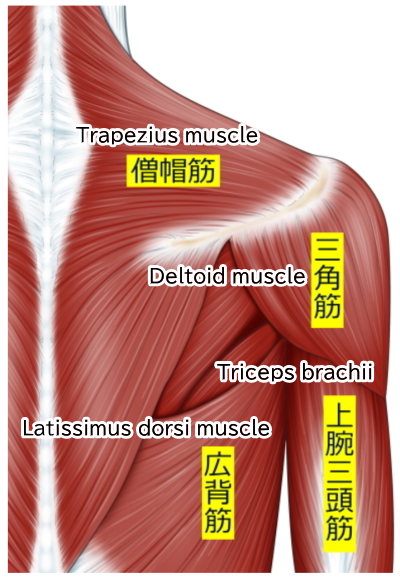
Trapezius muscle:It is a large and triangular muscle extending from the upper back to the scapula, which enables the scapula to move.
Deltoid muscle:It is formed of acromial, clavicular and scapular spinal parts. It plays a significant role to lift and twist inward (adduct) the upper arm.
Latissimus dorsi muscle :It is considered one of the main muscles to extend the elbow, attaching on the scapula.
Triceps brachii:Its main function is to extend the elbow, attaching to the scapula.
Deep muscles and tendons
Subscapularis tendon is one of a group of tendons which collectively form the rotator cuff. The rotator cuff is made up of four tendons such as the Supraspinatus, Infraspinatus, teres minor, biceps and subscapularis. These tendons extend to the Humerus, passing under a bony ligamentous arch.
(ref dr David Duckworth)
This image is the back side of the shoulder which shows the subscapularis tendons under the trapezius muscle, the latissimus dorsi muscle, and the deltoid muscle.
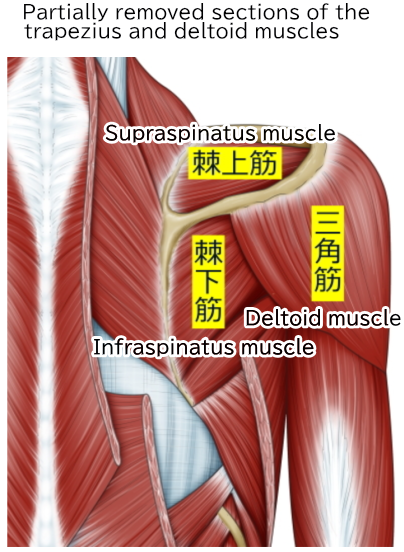
Here you will see the inner structure under the deltoid muscle and the triceps tendon viewing from the back side.
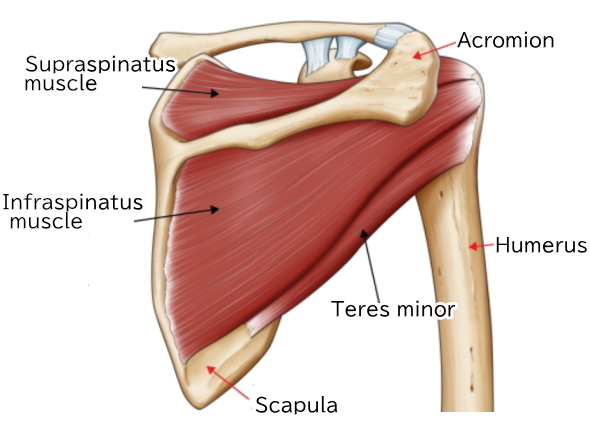
This is the side view of the right shoulder showing that the Supraspinatus and the Infraspinatus extend from the scapula to the Humerus under the deltoid muscle, the acromion, and the spine of scapula.
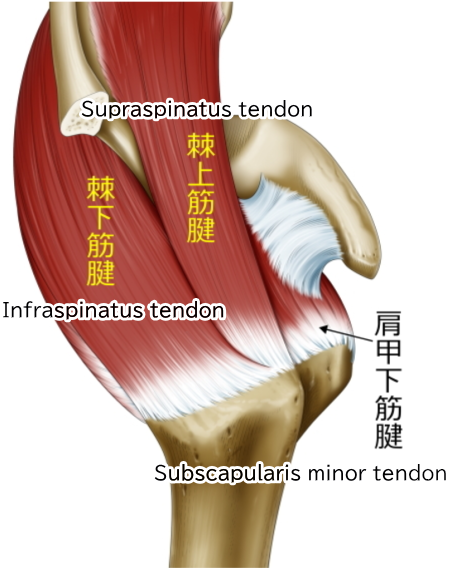
Supraspinatus tendon:It helps to move and raise the upper arm laterally.
Infraspinatus tendon:It is most responsible for a movement of shoulder external rotation such as turning or abducting (twisting) the upper arm lifting the arm.
Teres minor:It is a small muscle with a very big important role to rotate the humerus outward.
Subscapularis tendon:It helps lifting the upper arm and create powerful motions such as internal rotation (adduction).
Rotator cuff as a protective shield
The rotator cuff is a group of four muscles that come together as tendons to form a cuff around the head of the humerus. These tendons connect muscles to bone, forming a protective shield/plate/sheet shape.
One of the most common shoulder problems is rotator cuff tear which is a rip/rupture of one of the four tendons from the humerus.
Biceps brachii
It is one of the main muscles of the upper arm which acts on both the shoulder joint and the elbow joint. The muscle is composed of a short head and a long head that is why it is called Biceps (two heads or points of origin).
The short head extends from the coracoid process of the scapula (short head of biceps brachii), and the other originates from the scapula (long head of biceps brachii).
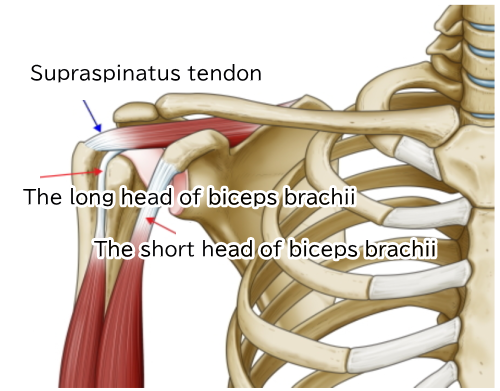
The long head of biceps brachii and the short head of biceps brachii
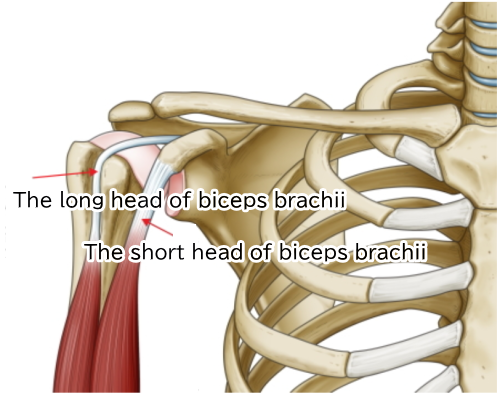
It illustrates that the long head of biceps brachii meanders along the upper arm to the scapula.
Ligaments and glenoid labrum
The glenoid cavity of the scapula and the humerus are banded with the glenohumeral ligaments.
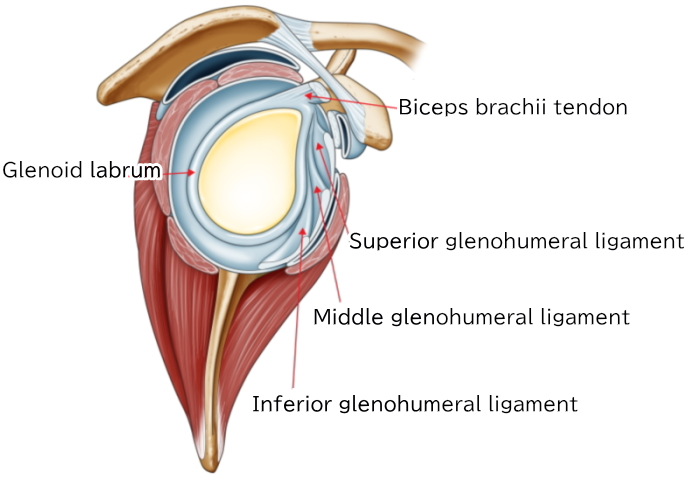
Ligaments attach onto the glenoid labrum whose role is to stabilize and centralize the head of the humerus within the glenoid cavity of the scapula.
SLAP tear/lesion happens when the glenoid labrum is injured or slipped off from the glenoid cavity of the scapula.
Glenohumeral ligaments, attaching to the humerus, consist of three ligaments;
Superior glenohumeral ligament (SGHL),
Middle glenohumeral ligament (MGHL), and
Inferior glenohumeral ligament (IGHL).
Each ligament has different roles.
When the arm is down and kept beside your body, SGHL is tightened while IGHL is relaxed.
When you raise your arm, SGHL is relaxed while MGHL begins to get tightened.
As you put your arm over your head, the more IGHL gets tense, the more SGHL gets relieved.
When you put your arm upward and twist it outward, IGHL becomes tighter.
A glenoid labrum tear in the anterior joint is called a Bankart lesion. One of the causes is that IGHL tears off from the glenoid cavity, and it may result in shoulder instability and dislocation. You may experience loose shoulder.
This condition is called Bankart lesion, named after British orthopedic surgeon Arthur Sydney Blundell Bankart.
Shoulder Topics
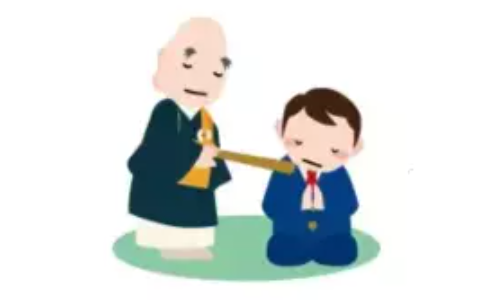
An overview of shoulders, including their characteristics, structure, symptoms of shoulder disorders, and various shoulder conditions.
Why shoulder problems?
Shoulder problems
Shoulder joint features
Anatomy of the shoulder
